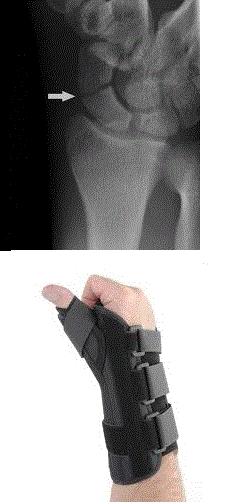Predicting a Scaphoid Fracture
Reference:Parvizi J et al Combining the clinical signs improves diagnosis of scaphoid fractures. A prospective study with follow-up. J Hand Surg Br. 1998 Jun;23(3):324-7.
This prospective study involved 215 patients with scaphoid fractures and concluded that the following 4 clinical tests had 100% sensitivity, meaning if any of the tests are negative, the patient is unlikely to have a scaphoid fracture.
i) Anatomical snuff box tenderness
ii) Scaphoid tubercle tenderness
iii) Pain on longitudinal compression of the thumb
iv) Pain on thumb ROM testing
On the other hand individually these tests had low sensitivity. The specificity was 9% for anatomical snuff box tenderness, 30% for scaphoid tubercle tenderness, 48% for pain on longitudinal compression of the thumb and 66% for pain on thumb ROM testing.
What does this all mean in a clinical setting?
If you see a patient post fall onto outstretched hand with soreness at the scaphoid region, do the above mentioned 4 tests.
If only one, two or three of the tests are +ve they likely do not have a scaphoid fracture. If all four tests are +ve, they should definitely get an x-ray. A scaphoid fracture should not be missed!
If in doubt, the rule of thumb (no pun intended) is that the wrist and thumb should be braced and stabilized until symptoms improve, in case a fracture was missed on an x-ray.
Posted on: September 26, 2013
Categories: Wrist & Hand


